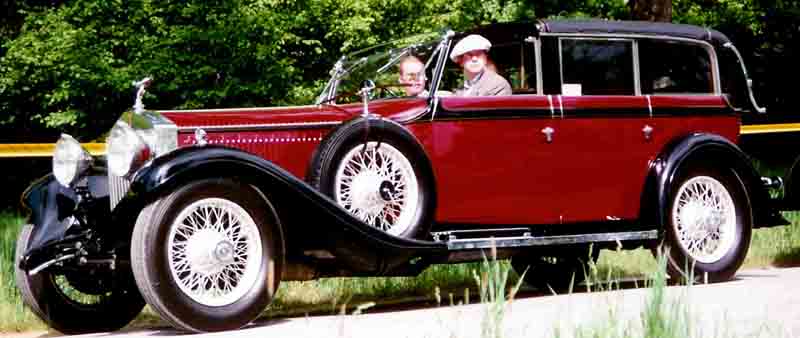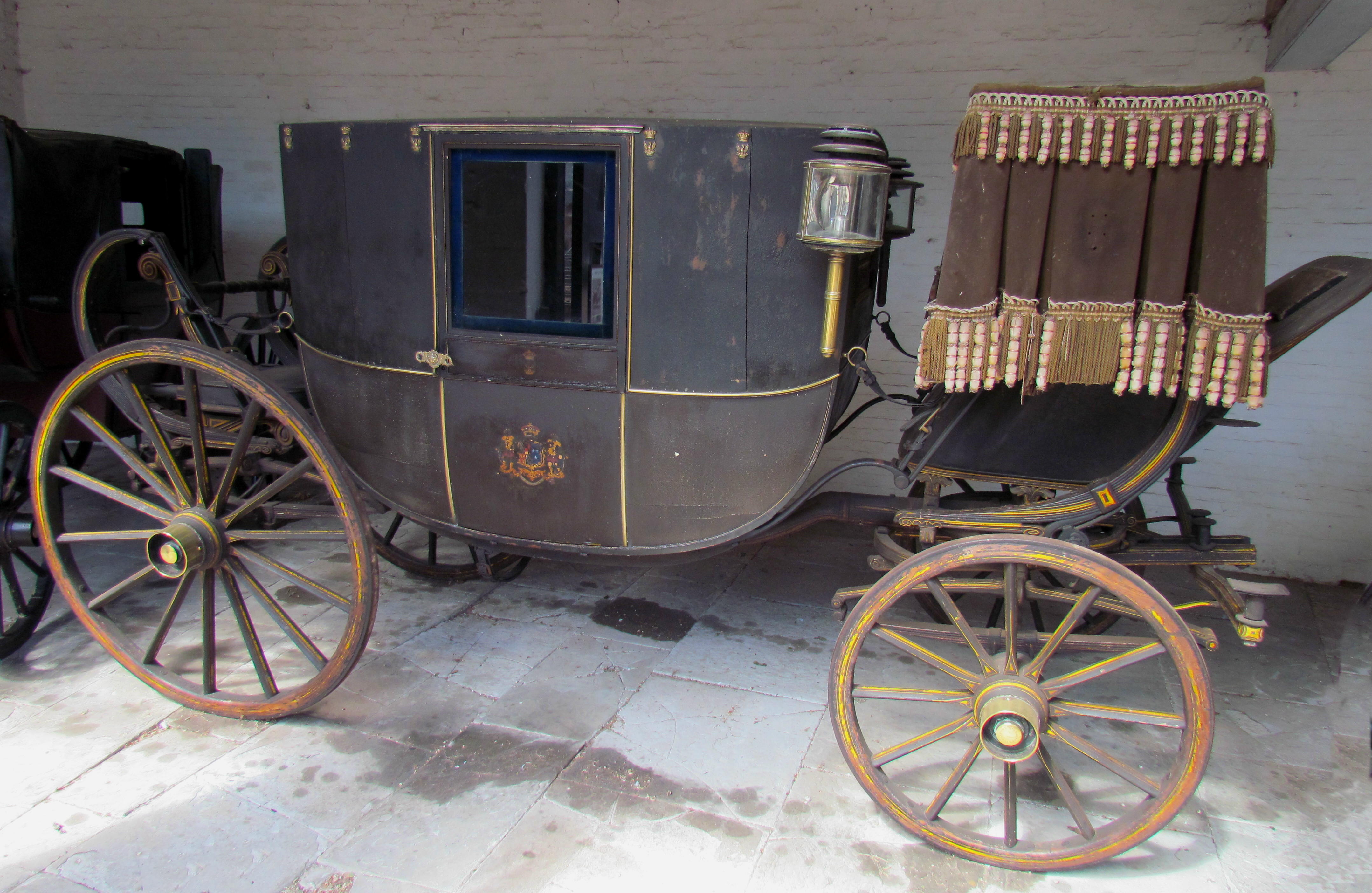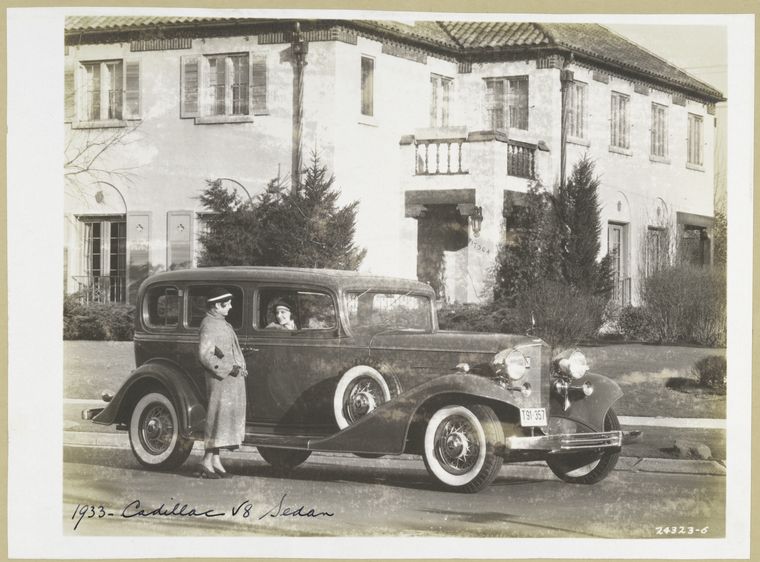|
Rolls-Royce Phantom II
The Rolls-Royce Phantom II was the third and last of Rolls-Royce's 40/50 hp models, replacing the New Phantom in 1929. It used an improved version of the Phantom I engine in an all-new chassis. A "Continental" version, with a short wheelbase and stiffer springs, was offered. Description Drivetrain The Phantom II used a refinement of the Phantom I's 7.7 L () pushrod-OHV straight-6 engine with a new crossflow cylinder head. Unlike on previous 40/50 hp models, the engine was bolted directly to the 4-speed manual transmission. Synchromesh was added on gears 3 and 4 in 1932 and on gear 2 in 1935. Power was transmitted to the rear wheels using an open driveshaft, a hypoid bevel final drive, and Hotchkiss drive, replacing the torque tube from a remotely mounted gearbox used on earlier 40/50 hp models. Chassis The chassis of the Phantom II was completely new. The front axle was mounted on semi-elliptical leaf springs as on earlier 40/50 hp models, but th ... [...More Info...] [...Related Items...] OR: [Wikipedia] [Google] [Baidu] |
Rolls-Royce Limited
Rolls-Royce was a British luxury car and later an aero-engine manufacturing business established in 1904 in Manchester by the partnership of Charles Rolls and Henry Royce. Building on Royce's good reputation established with his cranes, they quickly developed a reputation for superior engineering by manufacturing the "best car in the world". The business was incorporated as Rolls-Royce Limited in 1906, and a new factory in Derby was opened in 1908. The First World War brought the company into manufacturing aero-engines. Joint development of jet engines began in 1940, and they entered production. Rolls-Royce has built an enduring reputation for development and manufacture of engines for defence and civil aircraft. In the late 1960s, Rolls-Royce was adversely affected by the mismanaged development of its advanced RB211 jet engine and consequent cost over-runs, though it ultimately proved a great success. In 1971, the owners were obliged to liquidate their business. The useful p ... [...More Info...] [...Related Items...] OR: [Wikipedia] [Google] [Baidu] |
Barker (coachbuilder)
Barker & Co. was a coachbuilder, a maker of carriages and in the 20th century bodywork for prestige cars. History Founded in London in 1710Coventry Archives: ref. PA1356. Barker & Co. Administrative history: Barker and Company, founded 1710, address Chandos Street, London. Reformed as Barker & Company (Coachbuilders) in 1905. Taken over by Hooper & Company (Coachbuilders), St James Street, London. The firm was taken over by B.S.A. and assigned to Daimler (a B.S.A. subsidiary) c.1940 by a guards officer it more recently traded as Barker & Co. Limited. After the 1920s Barker & Co seemed to be unable to keep up with advances in the use of light alloys for framing. Requests for sturdier bodies were met by using heavier components which hampered the finished product's performance. The company fell into receivership in 1938 and its brand name and business were taken over by its long-term rival Hooper & Co which in its turn was taken over by Daimler in 1940 and so became part of t ... [...More Info...] [...Related Items...] OR: [Wikipedia] [Google] [Baidu] |
Thrupp & Maberly
Thrupp & Maberly was a British coachbuilding business based in the West End of London, England. Coach-makers to Queen Victoria they operated for more than two centuries until 1967 when they closed while in the ownership of Rootes Group. Mr Thrupp This family coachbuilding firm was started near Worcester about 1740. The founder's son, Joseph Thrupp (died London 1821), came to London about 1765 and ran a coach making business in George Street, Grosvenor Square. Though his best known coachbuilder descendant was George Athelstane Thrupp (1822-1905) Joseph left a number of notable descendants* Arthur Thomas Thrupp (1828-1889), Royal Navy officer * Dorothea Ann Thrupp (1777-1847), writer * Frederick Thrupp (1812-1895), sculptor * John Thrupp (1817-1870), historian * Joseph Francis Thrupp (1827–1867), churchman and academic who were not coach, carriage or harness makers. Joseph's London business was continued by his nephew Henry East Thrupp (1774-1852),Thrupp, Henry East, son of ... [...More Info...] [...Related Items...] OR: [Wikipedia] [Google] [Baidu] |
Park Ward
Park Ward was a British coachbuilder founded in 1919 which operated from Willesden in North London. In the 1930s, backed by Rolls-Royce Limited, it made technical advances which enabled the building of all-steel bodies to Rolls-Royce's high standards. Bought by Rolls-Royce in 1939, it merged with H. J. Mulliner & Co. in 1961 to form Mulliner Park Ward. History Park Ward was founded in 1919 by William MacDonald Park and Charles Ward; they had worked together at F.W. Berwick Limited, the makers of Sizaire-Berwick cars. They built their first Rolls-Royce body in 1920. After producing bodies for a variety of cars in the early 1920s, Park Ward became particularly associated with W O Bentley's new business, manufacturing their chassis nearby at Cricklewood. In 1922, they were asked by Rolls-Royce to take part in a scheme to make standard bodies for their small Twenty model, but the project was abandoned, although they did build bespoke bodies for Rolls-Royce customers exhibiting a ... [...More Info...] [...Related Items...] OR: [Wikipedia] [Google] [Baidu] |
Coachbuilder
A coachbuilder or body-maker is someone who manufactures bodies for passenger-carrying vehicles.Construction has always been a skilled trade requiring a relatively lightweight product with sufficient strength. The manufacture of necessarily fragile, but satisfactory wheels by a separate trade, a wheelwright, held together by iron or steel tyres, was always most critical. From about AD 1000 rough vehicle construction was carried out by a ''wainwright'', a wagon-builder. Later names include ''cartwright'' (a carpenter who makes carts, from 1587); ''coachwright''; and ''coachmaker'' (from 1599). Subtrades include ''wheelwright'', ''coachjoiner'', etc. The word ''coachbuilder'' first appeared in 1794. ''Oxford English Dictionary'' 2011 Coachwork is the body of an automobile, bus, horse-drawn carriage, or railway carriage. The word "coach" was derived from the Hungarian town of Kocs. Coachbuilt body is the British English name for the coachbuilder's product. ''Custom body'' is th ... [...More Info...] [...Related Items...] OR: [Wikipedia] [Google] [Baidu] |
Rolls Royce Phantom II Kellner 1930
Roll or Rolls may refer to: Movement about the longitudinal axis * Roll angle (or roll rotation), one of the 3 angular degrees of freedom of any stiff body (for example a vehicle), describing motion about the longitudinal axis ** Roll (aviation), one of the aircraft principal axes of rotation of an aircraft (angle of tilt to the left or right measured from the longitudinal axis) ** Roll (ship motion), one of the ship motions' principal axes of rotation of a ship (angle of tilt to the port or starboard measured from the longitudinal axis) * Rolling ''manoeuvre'', a manoeuvre of any stiff body (for example a vehicle) around its roll axis: ** Roll, an aerobatic maneuver with an airplane, usually referring to an aileron roll, but sometimes instead a barrel roll, rudder roll or slow roll ** Kayak roll, a maneuver used to right a capsized kayak ** Roll program, an aerodynamic maneuver performed in a rocket launch * Roll rate (or roll velocity), the angular speed at which an aircraft ca ... [...More Info...] [...Related Items...] OR: [Wikipedia] [Google] [Baidu] |
Cadillac Series 355
The Cadillac V8 Series 355 was manufactured by Cadillac from 1931 until 1935. They were V8-cylinder cars, sold in several models: a 2-door coupe, club coupe, a 2-door convertible (car), convertible, 4-door convertible (car), convertible, a 4-door Sedan (automobile), sedan a 4-door town car and a 4-door limousine. It continued the popular name Cadillac V8 while being joined with the larger Cadillac V-12 and Cadillac V-16. Models 355A (1931) The 1931 Series 355A was very similar to the Series 353 except it was longer and lower, had a longer hood with five hood ports, with matching doors in the cowl. There was a modified coach sill with no compartments in the splash pan. The battery and tool compartment were now under the front seat. Floor boards were made of metal for the first time. The instrument panel was oval with the same gauge groupings as in the Series 353. The Series 355 featured a radiator screen, a single bar bumper and dual horns. The headlight diameter was reduced b ... [...More Info...] [...Related Items...] OR: [Wikipedia] [Google] [Baidu] |
Packard Eight
The Packard Eight was a luxury automobile produced by Packard between 1924 and 1936, and was an all new platform that took the top market position from the earlier Packard Twin Six which was first introduced in 1916. When it was introduced, it was designated as the Senior Packard until the company ended in the late 1950s. Packard's first eight cylinder engine was introduced as the Single Eight with two wheelbases offered in and , while sharing a naming convention with the junior Single Six. Starting in 1928, new naming conventions were offered as four models, the Standard Eight, Custom Eight, De Luxe Eight, and Speedster it was powered by a low-compression aluminum-head L-head inline eight producing (hence the name). Packard ads bragged the engine "floated" on new rubber mounts. Power would be upgraded to in 1932 and in 1933. The Eight offered optional (no extra cost) four-speed synchromesh transmission. Like other Packards of this era, it featured Ride Control, a system ... [...More Info...] [...Related Items...] OR: [Wikipedia] [Google] [Baidu] |
Duesenberg Model J
The Duesenberg Model J is a luxury automobile made by Duesenberg. Intended to compete with the most luxurious and powerful cars in the world, it was introduced in 1928, the year before the stock market crash that led to the Great Depression. The Model J, available with a supercharger after 1932, was sold until Duesenberg Motors Company went bankrupt in 1937. Background E. L. Cord, the owner of Auburn Automobile, and other transportation firms, bought the Duesenberg Motor Corporation on October 26, 1926 for the brothers' engineering skills, talent and brand name. He intended to produce a car to rival the size, power, and luxury of top European brands such as Hispano-Suiza and Rolls-Royce. After Cord's takeover, the new company was renamed "Duesenberg, Inc." Fred would continue in the new organization with the title of vice president in charge of engineering and experimental work. Fred's brother August, who had played an important role in the development of the Model A and its v ... [...More Info...] [...Related Items...] OR: [Wikipedia] [Google] [Baidu] |
Mercedes-Benz 770
The Mercedes-Benz 770, also known as the ''Großer Mercedes'' (German for "Big Mercedes"), was a large luxury car built by Mercedes-Benz from 1930 until 1944. It is probably best known from its use by high-ranking Nazi German politicians and other Axis officials before and during World War II, including Adolf Hitler, Paul von Hindenburg, Hermann Göring, Heinrich Himmler, Reinhard Heydrich, Ion Antonescu, Benito Mussolini and Hirohito, many of which were captured in archival footage. Series I - W07 (1930–1938) The 770 was introduced in 1930 as the successor to the Mercedes-Benz Typ 630, with the internal code W07. These high-priced cars were mainly used by governments as state vehicles. Reich President Paul von Hindenburg, Emperor Hirohito and Pope Pius XI were among the customers, and Adolf Hitler used a 770 from 1931 onwards. 117 W07-series cars were built until 1938. The W07 version of the 770 was powered by an inline eight-cylinder engine of capacity with an overhead ca ... [...More Info...] [...Related Items...] OR: [Wikipedia] [Google] [Baidu] |
Chrysler Imperial
The Chrysler Imperial, introduced in 1926, was Chrysler's top-of-the-line vehicle for much of its history. Models were produced with the Chrysler name until 1954, after which it became a standalone brand; and again from 1990 to 1993. The company positioned the cars as a prestige marque to rival Cadillac, Continental, Lincoln, Duesenberg, Pierce Arrow, Cord, and Packard. According to ''Antique Automobile'', "The adjective ‘imperial’ according to Webster's Dictionary means sovereign, supreme, superior or of unusual size or excellence. The word imperial thus justly befits Chrysler's highest priced model." For several decades and multiple generations, the Imperial was the exclusive Chrysler and the favorite choice of luxurious transportation for senior executive leadership, government officials, royalty and various celebrities in comparison to the more affordable Chrysler New Yorker. Over the years the appearance, technological advancements and luxurious accommodations updated w ... [...More Info...] [...Related Items...] OR: [Wikipedia] [Google] [Baidu] |

.jpg)


.jpg)




.jpg)